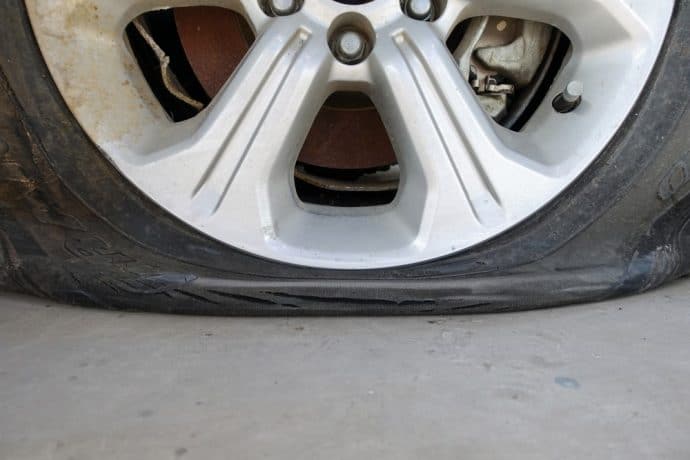There is arguably nothing more inconvenient than having a flat tire that needs to be repaired. Since you can’t wait to have a flat repaired or replaced, it is one of those fixes that need to be done ASAP. If you are wondering whether to have your car tire repaired or whether you need to buy a new tire, keep reading! Below are six things you should know before throwing money into putting a band-aid on a punctured tire.
- Only repair punctures that happen within your tire’s treads
To know whether you should repair or replace your damaged tire, you must know the location of the puncture. If you are going to repair a punctured tire, you should only do so if the hole is located somewhere within the tread of the tire.
If the tire has a hole anywhere else, you are probably throwing good money after bad because punctures outside of the tread area are much more likely to rupture again. You should NEVER repair a puncture that is within an inch of the sidewall. Before you make the decision to patch a hole, make sure you know the potential for the puncture to reopen.
- Only repair an issue-free tire that has 1/16-inch treads
Don’t try to extend the life of a tire that is already on its last legs. If you repair a punctured tire that is already on its way out, you might be putting yourself and your family in danger by driving on a tire that isn’t safe to begin with. This is especially true if you have to patch a tire that you’ve patched before. Check out your tire tread and make sure that your tires have a decent amount of miles left on them. If a new tire is in your future anyway, it is best to bite the bullet and buy new for everyone’s safety.
- Find a professional
Never try to repair a punctured tire by yourself. It might be tempting to watch a video and do it yourself, but with so much riding on your tires, is it really worth it to put yourself in jeopardy to save a little money? Do you know if you need a plug or a patch? What tools should you use? How long will your repair last?
If you feel like you’re in over your head and are going to take your tire to be repaired, also make sure that the person who is repairing it knows what they are doing. The only way to make sure that the tire is repaired safely is to use a patch and plug method.
- Separate the tire from the rim
To really know how extensive a tire puncture, the repairman needs to remove the tire from the rim and check the damage from all angles. If the professional isn’t going through the hassle of inspecting the tire fully, then they aren’t really a “professional” at all. You can’t get a good look at the extent of the damage unless you go the extra mile, no pun intended. Driving on a damaged tire is extremely dangerous.
- Don’t repair a repair
If you have a puncture in the same area as a previous repair, then don’t attempt to put one repair over another. If you have had a previous repair on your tire, it is time to get a new tire. If you try to put one repair over another, you are going to risk the integrity of the tire itself, which isn’t a very sound idea. If the damage is bad enough, the tire could wear and burst while you are driving down the road.
- Replace when damage is more than ¼-inches in diameter
If the hole in the tire is more than a quarter inch in diameter, it is best to put money into getting a new tire. Repairing a tire with a hole that is too big will put you in danger when you are out on the road. The hole can expand if improperly patched (or even if the tire repair has aged too much), and rupture, leaving you on the side of the road.
New tires can be expensive, but throwing good money at fixing a lost-cause tire is not a safe decision. There is a whole lot riding on your tires. If you notice a puncture, don’t just assume that it can be fixed before asking the right questions. You need to ensure that when your repair is made, it will hold up for the long haul.

